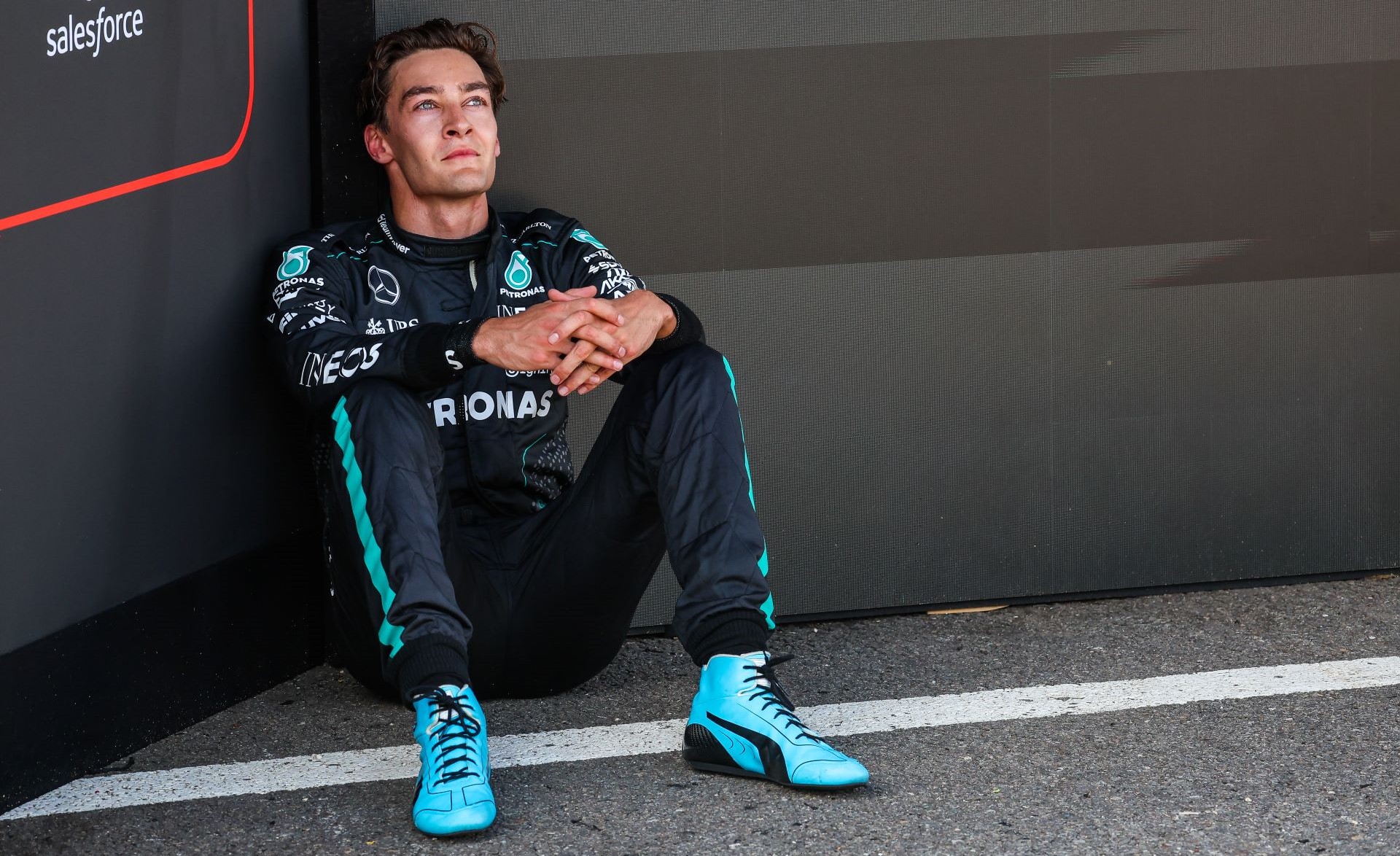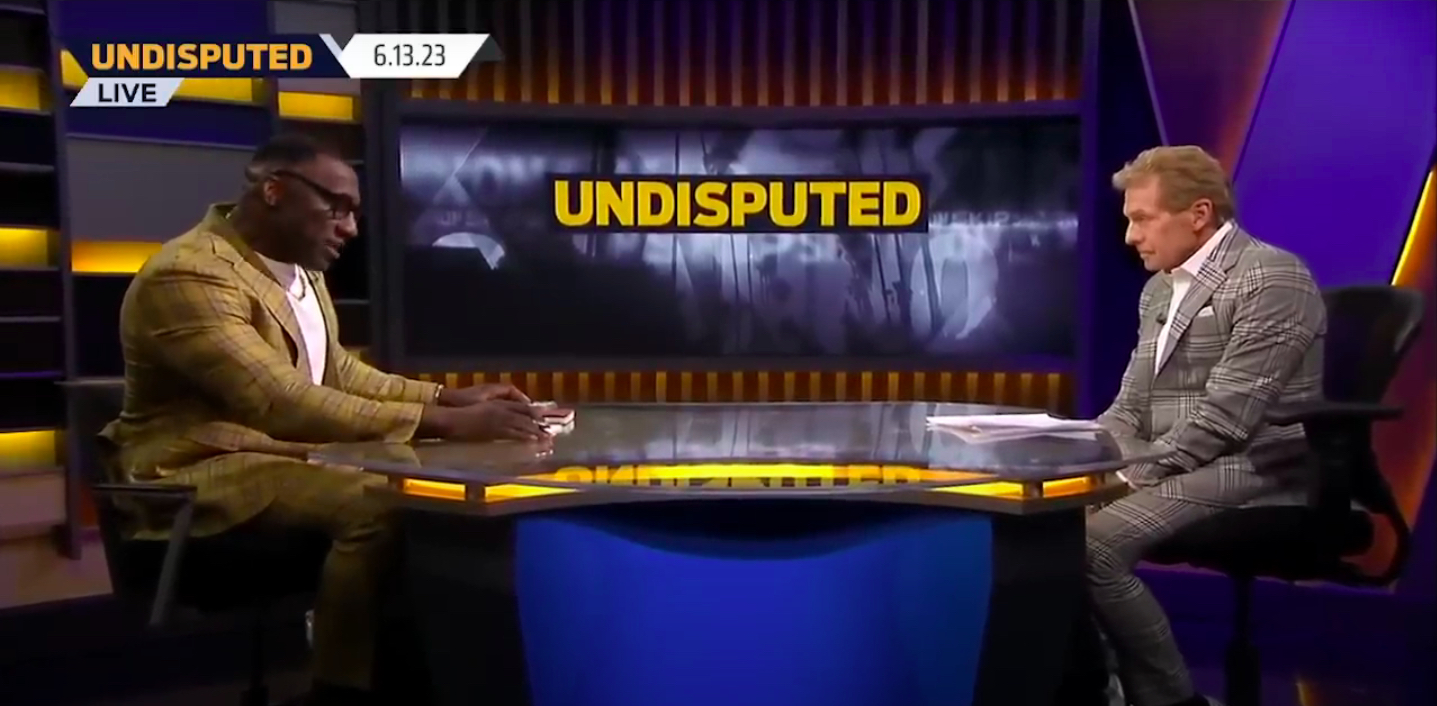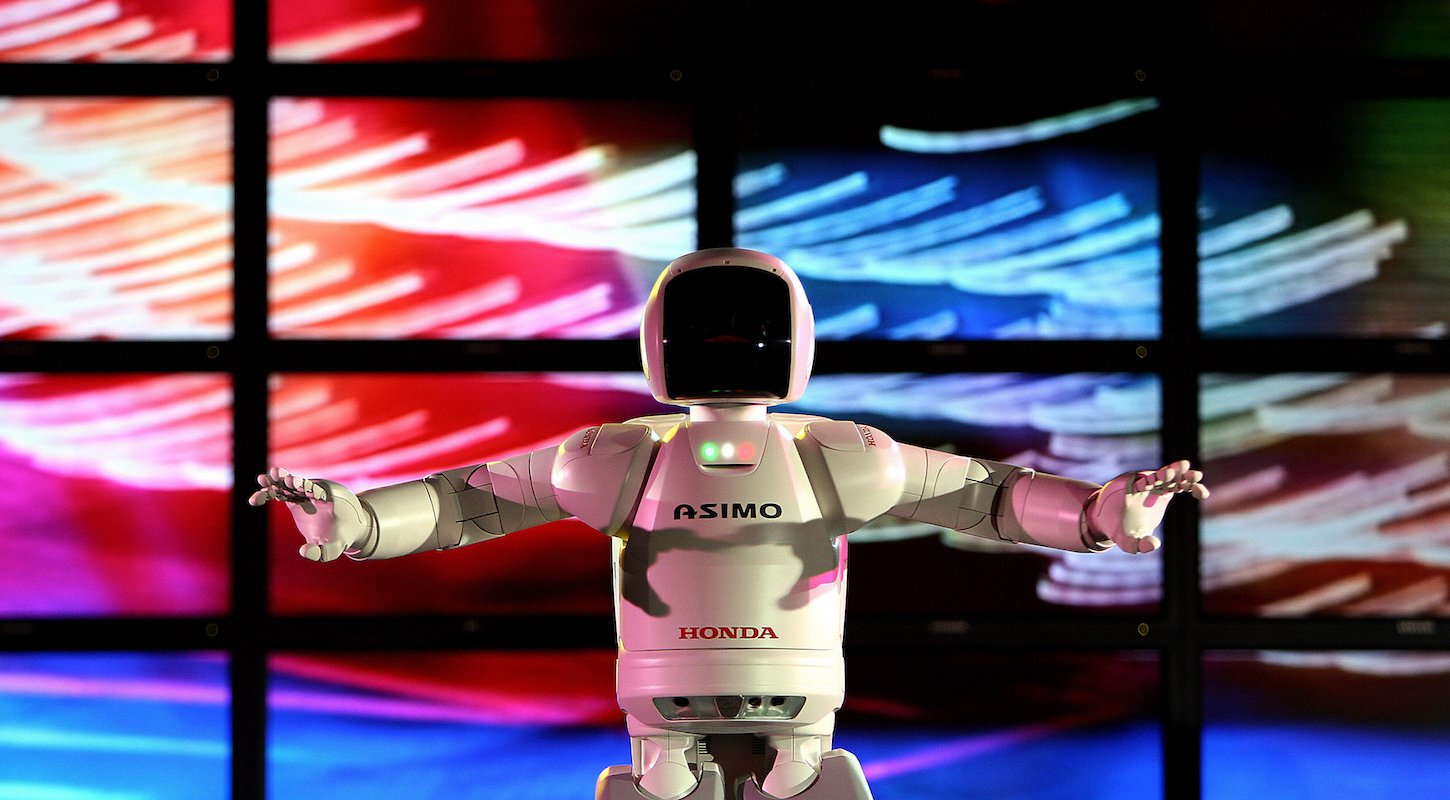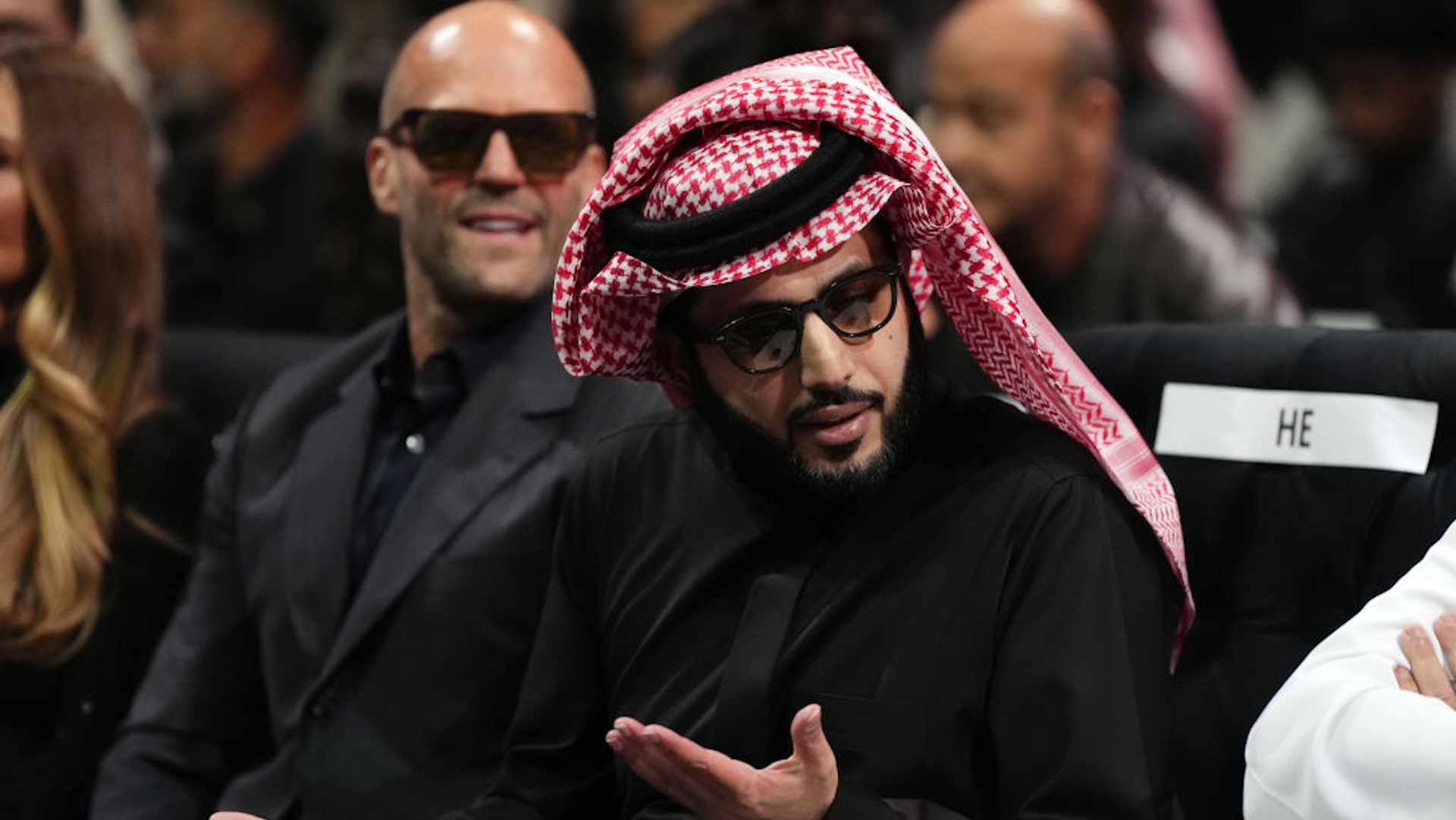When Lewis Hamilton talked down the Mercedes car on Saturday, it wasn't sandbagging. "I think [the Red Bull] is the fastest here this weekend, or at least tied with McLaren," Hamilton said. Considering Mercedes's disaster of a Friday and the end qualifying result—a Red Bull, a Ferrari, another Red Bull, Hamilton's Mercedes, and then two McLarens—it was a simple statement of fact.
Hamilton didn't race like it. He started P3 on the grid after Max Verstappen took a 10-place grid penalty for his engine, and rocketed off the line. It took a couple of corners for the overtake on Sergio Pérez to stick; a couple of laps for Hamilton to catch up to Leclerc, pass, and pull out of DRS range. Despite running back a Sebastian Vettel radio classic about how "something is moving down around my legs," it became Hamilton's race to lose as soon as he was in the clear air. All of the allegedly faster cars were trapped in DRS trains a few places back. The championship leaders were squabbling down at seventh. Mercedes made the perfect reactive pit stop calls every single time to avoid losing track position, which as the DRS trains and general lack of overtaking proved, were critical. Hamilton pit to cover off Verstappen, and then pit to cover off Leclerc. After he came out in front in the second pit stop, it was sealed. All he had to do was make it to the end. And then he lost to ... who? George Russell? His teammate George Russell?
Russell was written off for virtually the entire race. He started P6 on the grid, behind Hamilton—who he had been regularly beating in single-lap qualifying pace—and the two McLarens, and gained a place after an unfortunately typical poor start from Lando Norris. But for most of the race, he was in no man's land, also known as the DRS train. He made his first pit stop on lap 10, along with Max Verstappen. As the other drivers pit ahead of him, he crawled up the places, from outside of the points up to P4. After Piastri made the final pit stop on lap 31, Russell found himself in P1, a little over seven seconds ahead of his teammate, Hamilton, with 13 long laps to go.
Lesser teams, and lesser drivers, would've pit Russell to salvage as many points as possible rather than try to go for the one-stop strategy. The character of the Circuit de Spa-Francorchamps has changed dramatically over the years. The previously brutal Eau Rouge could now easily be taken flat out by any modern Formula 1 car, but after the recent shift to ground force and the resulting ride height regulations, drivers have started lifting at the corner anyway to avoid grinding down the tolerance plank. Verstappen was in constant, even-tempered radio conversation with his race engineer about how much he was allowed to push, which was a thinly coded negotiation of the car's tolerance plank limits.
Spa also used to make for relatively clean running without much tire wear, but after the track was partially resurfaced, it is now a Frankensteinian patchwork of smooth surfaces and abrasive ones that result in much higher tire degradation. Track position only goes so far—stick out too long, and drivers start hemorrhaging places. Russell wasn't the only driver to suggest a one-stopper. At the start of the race, Charles Leclerc told his team, "If we're getting undercut, let's go long," though shortly after they showed that radio message on broadcast, he came into the pits. But, to both his benefit and his detriment, Russell has always been a driver obsessed with wonky race strategies. Despite being the first driver to make a pit stop in the race, he was the only driver on the track who'd go for it.
You can do the math. Thirteen laps to go, a little over seven seconds to close—Hamilton needed around .600 seconds a lap on his 17-lap fresher tires to catch Russell, and then have a few laps to perform an overtake. Hamilton managed those lap times, and then some. He was within DRS range with four laps to go, but it was no longer a matter of pace. At certain points in the lap, particularly in the downforce-happy second sector, Hamilton would be within three-tenths of a second of Russell. But Russell, with clean air ahead of him, paired the brilliant strategy call with brilliant tire management, and was always able to get a better exit coming out of the tight turn at La Source. Hamilton, always six-tenths back in the DRS zone at the Kemmel straight against a teammate running a similar set up, was never quite able to close the gap.
"It goes without saying, but clean air is king," Oscar Piastri said over the radio, after his race engineer complimented his pace in the brief stint he spent in the race lead. Piastri proved a useful benchmark for this phenomenon in the latter laps of the race. He was hovering around five seconds behind Hamilton, unable to gain much ground, but once Hamilton was stuck behind Russell, Piastri made it within DRS range. He never really had a shot at challenging the Mercedes 1-2, so long as Hamilton had DRS behind Russell, but he made the final lap more exciting than it already was. The entire podium crossed the start-finish line within a margin of 1.173 seconds.
So Piastri also got to bear witness to a 1-2 victory where, miracle of all miracles, nobody was screwed over, and only one driver was unhappy. If you want more evidence for the evolution of Spa, Guenther Steiner was the one doing the post-race interviews, rather than in the Haas garage. He didn't needle as much as Nico Rosberg had in Hungary, but asked the obligatory questions about tire strategy. Hamilton remained on an even keel, despite his obvious frustration at the race result. He made a one-off comment about how he still had life in his tires each time he came in for a pit stop to Steiner. In the cooldown room, he made a similar comment to Piastri, who did a remarkable job of remaining a neutral party and remarked on the benefit of clear air in the race. In the post-race interview, Hamilton suggested that he was not informed by the team about Russell's one-stop strategy, and learned too late that he had to push for the race win.
The final note is the most legitimate one. After his second pit stop, it was clear that Hamilton wasn't immediately pushing. It's unclear if it would've made a difference—Russell was always going to get a cleaner exit out of La Source, and Hamilton, who was gaining all his time in the second sector, which has few overtake opportunities, was never going to make up much time on the straights. And for Hamilton's complaints, it's impossible to imagine a world where he would have gone to the one-stopper. He and Mercedes played it by the book. Only a driver like George Russell, in a position where he had nothing to lose, would try something like he had, and reap the benefits for it.
At least, this is what I would've written, if not for those pesky stewards. Soon after the race ended, technical delegate Jo Bauer referred Russell's car to the stewards for being underweight by 1.5 kilograms—a violation of the technical rules which would be a slam-dunk disqualification. There was a wait as Mercedes plead their case, and the car was re-weighed, but in the end, there's only so much pleading can do. The team acknowledged that there were "no mitigating circumstances." Russell's car was disqualified, giving Lewis Hamilton his 105th career win, and Charles Leclerc the final podium spot.
Race disqualifications, which are almost always due to a costly team oversight in the finest of margins, never feel good. Sebastian Vettel lost a podium due to fuel issues in 2021; Lewis Hamilton lost a podium just last year, due to ride height issues. It's hard to argue that those slim margins actually impacted the race result, but whether they did or not is irrelevant—the rules in these situations are, for once, explicit and indisputable. There are many factors that may have led to Russell's car being underweight. Analyst Ruth Buscombe listed higher fuel consumption due to faster-than-expected performance, lack of dry running data to calibrate the car, the lack of an in-lap, and most notably, higher tire degradation due to the one-stop strategy.
All race disqualifications are sad, frustrating affairs, but if it was the tire degradation that led to the small 1.5 kilogram deficit, Russell's disqualification is all the more poetically tragic. He picked the only strategy that would allow him to win, which very well may have cost him the win. This is the beauty and cruelty of F1 rolled together: the utter brilliance of the drive Russell put together, turned into a parenthetical within the span of three paragraphs and a single stewards meeting.






